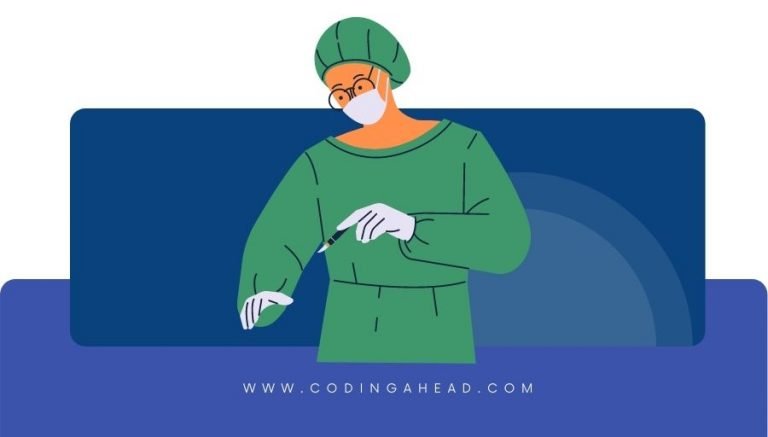How To Use CPT Code 14061
CPT 14061 describes the procedure of adjacent tissue transfer or rearrangement for defects in the eyelids, nose, ears, and/or lips that range in size from 10.1 square centimeters to 30.0 square centimeters. This article will cover the description, procedure, qualifying circumstances, appropriate usage, documentation requirements, billing guidelines, historical information and billing examples.
1. What is CPT Code 14061?
CPT 14061 is a code used to describe the procedure of adjacent tissue transfer or rearrangement for defects in the eyelids, nose, ears, and/or lips. This procedure is performed when the size of the defect ranges from 10.1 square centimeters to 30.0 square centimeters. The provider replaces the damaged tissues with healthy tissues from an adjacent site to restore the integrity and function of the affected area.
2. Official Description
The official description of CPT code 14061 is: ‘Adjacent tissue transfer or rearrangement, eyelids, nose, ears and/or lips defect 10.1 sq cm to 30.0 sq cm.’
3. Procedure
When performing CPT 14061, the provider begins by prepping and anesthetizing the patient appropriately. They then clearly demarcate the exact area of the defect on the skin. The provider performs adjacent tissue transfers (ATT) by relocating a flap of adjacent normal, healthy tissue into the damaged area. This flap is taken from the adjacent healthy tissue and fixed into the area of the primary or secondary integumentary defect using sutures. The provider ensures that bleeding is stopped and applies a clean dressing to the site. This procedure is performed for defects ranging in size from 10.1 square centimeters to 30.0 square centimeters.
4. Qualifying circumstances
CPT 14061 is used for patients who have defects in the eyelids, nose, ears, and/or lips that range in size from 10.1 square centimeters to 30.0 square centimeters. The procedure is performed by a qualified healthcare professional who is trained in performing adjacent tissue transfers or rearrangements. The patient must have a documented need for this procedure, and the provider must clearly demarcate the area of the defect on the skin before performing the transfer or rearrangement.
5. When to use CPT code 14061
CPT code 14061 should be used when a patient has a defect in the eyelids, nose, ears, and/or lips that falls within the size range of 10.1 square centimeters to 30.0 square centimeters. This code is appropriate when the provider performs an adjacent tissue transfer or rearrangement to repair the defect. It is important to accurately document the size of the defect and the procedure performed to support the use of this code.
6. Documentation requirements
To support a claim for CPT 14061, the provider must document the following information:
- The size of the defect in square centimeters
- The specific area of the body where the defect is located (eyelids, nose, ears, and/or lips)
- A clear demarcation of the defect on the skin
- The procedure performed, including the technique used for the adjacent tissue transfer or rearrangement
- Any additional procedures performed, such as lesion removal or skin grafts
- Any complications or post-operative care provided
- The provider’s signature and credentials
7. Billing guidelines
When billing for CPT 14061, ensure that the procedure meets the qualifying circumstances and is performed within the specified size range. It is important to accurately document the procedure and any additional procedures performed. Skin grafts necessary to close secondary defects are considered additional procedures and should be reported separately. Lesion removal is considered part of the tissue transfer procedure and should not be separately reported. Review the documentation requirements and guidelines provided by the payer to ensure accurate billing and reimbursement.
8. Historical information
CPT 14061 was added to the Current Procedural Terminology system on January 1, 1990. There have been no updates or changes to the code since its addition.
9. Similar codes to CPT 14061
There are several similar codes to CPT 14061 that are used for adjacent tissue transfer or rearrangement procedures on the integumentary system. These include:
- CPT 14000: Adjacent tissue transfer or rearrangement, scalp, arms, and/or legs; defect 10.1 sq cm to 30.0 sq cm
- CPT 14020: Adjacent tissue transfer or rearrangement, forehead, cheeks, chin, mouth, neck, axillae, genitalia, hands, and/or feet; defect 10.1 sq cm to 30.0 sq cm
- CPT 14040: Adjacent tissue transfer or rearrangement, forehead, cheeks, chin, mouth, neck, axillae, genitalia, hands, and/or feet; defect 30.1 sq cm to 60.0 sq cm
- CPT 14060: Adjacent tissue transfer or rearrangement, scalp, arms, and/or legs; defect 30.1 sq cm to 60.0 sq cm
- CPT 14080: Adjacent tissue transfer or rearrangement, forehead, cheeks, chin, mouth, neck, axillae, genitalia, hands, and/or feet; defect greater than 60.0 sq cm
9. Examples
- A patient has a 15 square centimeter defect on their eyelid due to a previous excision of a lesion. The provider performs an adjacent tissue transfer to repair the defect using healthy tissue from an adjacent site.
- A patient has a 25 square centimeter defect on their nose following a traumatic injury. The provider performs an adjacent tissue rearrangement to restore the shape and function of the nose.
- A patient has a 20 square centimeter defect on their lip due to the removal of a cancerous lesion. The provider performs an adjacent tissue transfer to reconstruct the lip and improve its appearance.
- A patient has a 12 square centimeter defect on their ear following the removal of a large cyst. The provider performs an adjacent tissue rearrangement to close the defect and restore the contour of the ear.



